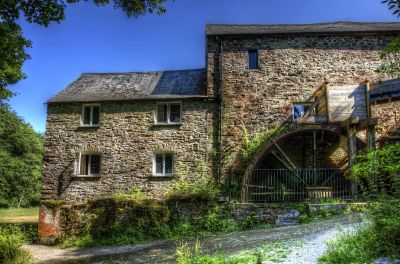
If you're looking for a pleasant woodland walk not too far from Saltash or Callington, Grade II listed Cotehele Mill should fit the bill nicely. There's a choice of walking routes, either from the National Trust-owned Cotehele House or from the Quay. The Grade I listed house dates from the Middle Ages and was updated by Sir Richard Edgecumbe, who inherited the property after fighting for the Tudors at the Battle of Bosworth.
It's just about certain there was a mill here in medieval times, and possibly sooner, although the current structure dates from the 19th century.
It was in the 1860s that the tenants, the Langsford family, extended the mill. They added a bakery on one side and a sawmill on the other, as well as a second water wheel, to provide power for the sawmill. The current structure hasn't changed much since the 1930s, when large flour mills meant it became difficult for small mills like Cotehele to compete.
Although the family concentrated on milling feed for animals for a while, the relative inaccessibility of the site made it uneconomical. In 1964, the last member of the Langsford family gave up the long-standing tenancy of the mill. The range of tools and equipment on display gives visitors a glimpse of how wheelwrights, saddlers, carpenters, and blacksmiths lived and worked in the past.
Power from the nearby Morden stream drives the mill wheel, with any unused electricity being fed back efficiently into the National Trust grid so it can be utilised elsewhere. The water runs back into the Morden, and from there, into Cornwall's most iconic river, the Tamar: the two waterways meet at the quay.
If you feel like sampling the flour for yourself by stirring up some muffins or producing a batch loaf or two, produce from the mill is packed by volunteers and sold locally. You can also buy it at the mill itself and the National Trust shop at the house.






